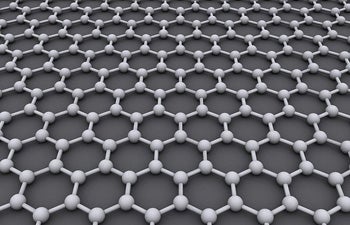The Next Big Thing
Stephan Haas, professor of physics and astronomy at USC Dornsife, has won a 2013 Friedrich Wilhelm Bessel Research Award, granted by the Alexander von Humboldt Foundation. The award allows him to continue his research on quantum systems in Bremen, Germany, for one year.
Haas, a theoretical physicist, has made significant contributions in the areas of quantum magnetism, unconventional superconductivity and quantum engineering. Since the beginning of the Fall semester, he has been in Bremen researching two-dimensional graphene and similar materials at two universities. With this award, Haas and collaborators Thomas Frauenheim and Tim Wehling of the University of Bremen will work toward the discovery and design of new functional materials to improve modern electronics using graphene — a crystalline form of carbon similar to diamond, graphite and carbon nanotubes.
“This award feels like a reassurance that I’m on the right path,” Haas said from Germany. “At the same time, I feel extremely grateful for the people who nominated me and have worked with me in the past. I’m eternally grateful to the graduate students and postdocs who have worked with me because they have contributed enormously to this research.”
Unlike research grants that are predicated upon the completion of future research, the Humboldt award is given based on an applicant’s existing body of outstanding research. Winners are then expected to continue to produce cutting-edge research which will have a seminal influence on their discipline beyond their immediate field of work.
Candidates must be nominated by two people, either established German academics or former winners of the same award. The award is valued at approximately $62,000, and promotes research collaborations among Germans and the international scientific community.

Stephan Hass’ recent research focuses on graphene, the 2-D version of the all-familiar graphite used in pencils. Graphene’s structure is a single carbon atom thick, which gives rise to unique properties and potential industrial applications to improve modern electronics.
Graphene is just one carbon atom thick, one million times thinner than paper. Its two-dimensional structure gives rise to unique properties and its strength, flexibility, and heat and electric conductivity have many potential industrial applications. The discovery of graphene led to the 2010 Nobel Prize in Physics. It is related to graphite, found in most pencils, which is the three-dimensional version of the mineral.
Haas’ recent research focuses on manipulating the basic, carbon-only atomic structure of graphene, retaining the two-dimensional structure but using different atoms to create new properties and materials.
“Graphene is a semi-metal and the properties of its electrons are unusual in that they display relativistic effects,” Haas said. “The class of materials I’m working on can do even more than that: they can superconduct and show exotic phases like charge density waves.
“We are investigating their quantum phase diagram, trying to see how to enhance the superconductive properties of these materials. You can manipulate these sheets and their properties by bringing them in contact with a substrate or adding other atoms. Two-dimensional structural properties are easier to manipulate than in three dimensions because the former is very sensitive to anything you bring it in contact with.”
Drawing on his strong theoretical background, Haas creates sophisticated models of what happens with these materials in their various permutations. Ultimately, the development of new materials like these that are flexible and superconductive could lead to more sophisticated functionality in modern electronics like cell phones and computers. Scientists say graphene and related materials could boost Internet speeds, serve as a touch sensitive coating and extend the lives of computers, to name a few benefits.
Haas, former vice dean for research at USC Dornsife and co-director of the USC Dornsife-based Center for Quantum Information Science and Technology, joined the Department of Physics and Astronomy in 1998. His research interests include nanoscience, quantum magnetism, unconventional superconductivity and the properties of quantum-many-body systems.
Haas has received a National Science Foundation CAREER Award, USC Dornsife’s Raubenheimer Outstanding Junior Faculty Award and General Education Teaching Award, USC’s Associates Award for Excellence in Teaching and Zumberge Interdisciplinary Award. He has also won awards from the Mellon and Fulbright foundations.